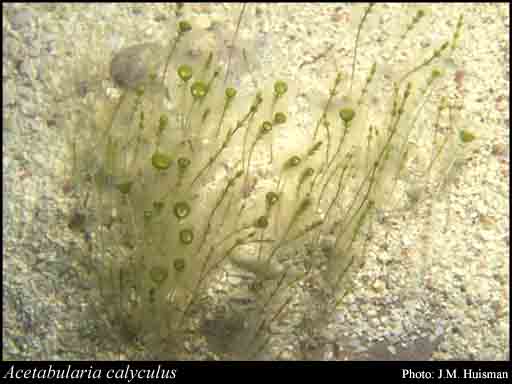This name is not current. Find out more information on related names.
- Reference
- Voy.Uranie [Freycinet] 621, Pl. 90, Figs 6-7 (1824)
- Conservation Code
- Not threatened
- Naturalised Status
- Native to Western Australia
- Name Status
- Not Current

Scientific Description
Habit and structure. Thallus single or in small clusters, 3–5(–7) cm high, axes whitish from calcification, bearing several whorls of branched, colourless hairs (pale green when young) on their upper half, di- to penta-chotomous with 5–7 orders of branching, and one (rarely two) summit whorls of 22–34 gametangial rays united laterally to form a concave disc or cup. Disc 3–6(–7) mm across, rays 1.5–2.5mm long and (400–)450–600 µm broad at their outer end, terminally truncate to slightly bilobed; chloroplasts rounded, 2–3 µm in diameter. Superior corona lobed and bearing 2–3 branched hairs or scars; inferior corona with a single lobe.
Reproduction. Cysts numerous, subspherical, 80–120 µm in diameter, liberating gametes.
Distribution. Widely distributed in tropical and subtropical seas and extending into warm temperate regions.
Habitat. A. calyculus commonly occurs in sand areas where it grows on dead shells.
[After Womersley, Mar. Benthic Fl. Southern Australia I: 295–296 (1984)]